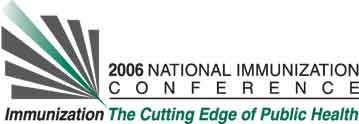Barbara H. Bardenheier, NIP/ISD/HSREB, Centers for Disease Control and Prevention, 1600 Clifton Rd, NE, MS-E52, Atlanta, GA, USA, Abigail Shefer, HSREB/ISD/NIP, Centers for Disease Control and Prevention, 1600 Clifton Road, MS E-52, Atlanta, USA, Ronald B. Tiggle, Division of Heatlh Care Statistics/Long Term Care Statistics Branch, National Center for Health Statistics, 3311 Toledo Rd, Hyattsville, MD, USA, Robin Remsburg, Division of Health Care Statistics, Long Term Care Statistics Branch, National Center for Health Statistics, 3311 Toledo Rd, Hyattsville, MD, USA, Jill Marsteller, Division of Health Care Statistics/Hospital Care Statistics Branch, National Center for Health Statistics, 3311 Toledo Rd., Room 3312, Hyattsville, MD, USA, and Suchita Lorick, NIP/ISD/HSREB, CDC, 1600 Clifton Rd, NE, MS-E52, Atlanta, GA, USA.
Learning Objectives for this Presentation:
By the end of this presentation participants will be able to identify trends in factors associated with receipt of influenza vaccination coverage as well as changes in coverage among residents in U.S. LTCFs from 1995-1999.
Background:
Approximately 36,000 people die of influenza-related infections annually with 90% of these deaths occurring among persons > 65 years. Residency in long-term care facilities (LTCFs) is a risk factor for influenza. The Advisory Committee for Immunization Practices (ACIP) recommends all LTCF residents receive influenza immunization.
Objectives:
To assess compliance with ACIP recommendations; to examine the change in influenza immunization coverage and predictors of receipt of immunizations among nursing home residents from 1995 to 1999, the most recent national data.
Methods:
Trend and multinomial logistic regression analysis of a cross-sectional national sample survey of nursing homes and nursing home residents (NNHS) with a two-stage probability design, stratified on size and certification status. Six current residents were randomly selected from each facility (n= approximately 8,000 each year).
Results:
The proportion of residents aged > 65 years that received influenza vaccination increased significantly from 62.2% in 1995 to 63.7% in 1997 to 65.8% in 1999 (p-value =.0251), while the proportion of residents with unknown status remained relatively constant (1995: 21.6%; 1997: 22.2%; 1999: 19.6%). Two important factors associated with receipt of influenza vaccination during all three years were living in LTCFs with influenza immunization programs and ever receiving the pneumococcal vaccine.
Conclusions:
The proportion of LTCF residents aged > 65 years receiving the influenza vaccine increased significantly during 1995-1999. Although almost all residents lived in homes with a program for influenza immunizations, a factor associated with receiving the vaccine, even within these homes almost a third of residents were not reported to have received the vaccine. Facilities that have high coverage for one vaccine might be more likely promote immunizations in general.
See more of Posters
See more of The 40th National Immunization Conference (NIC)

